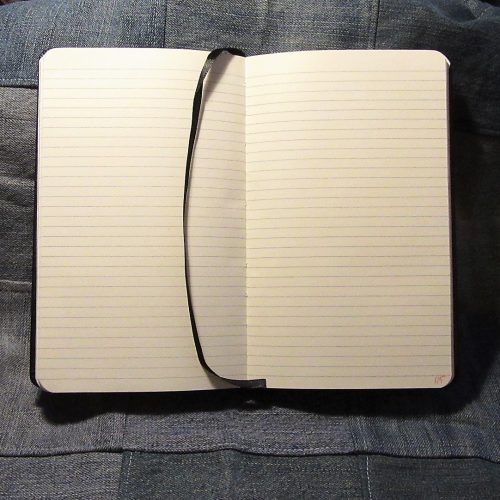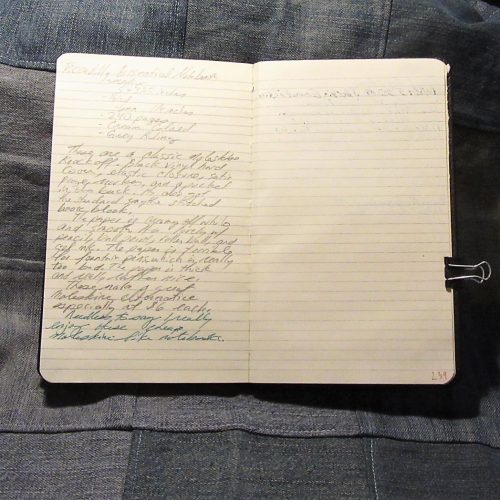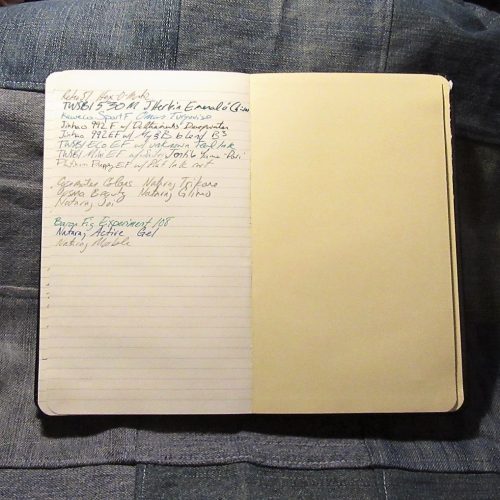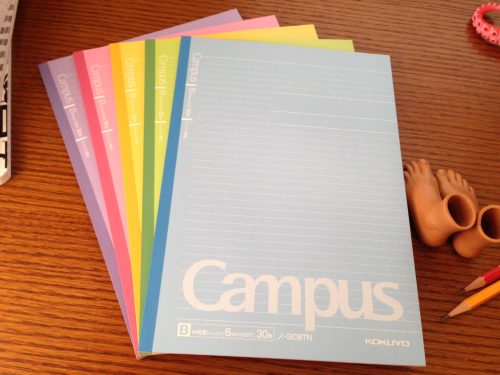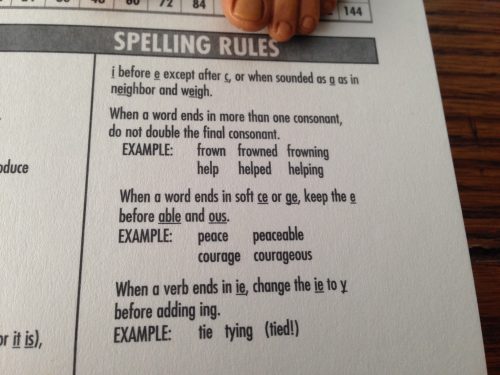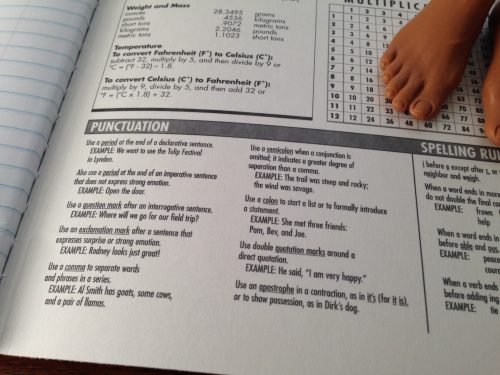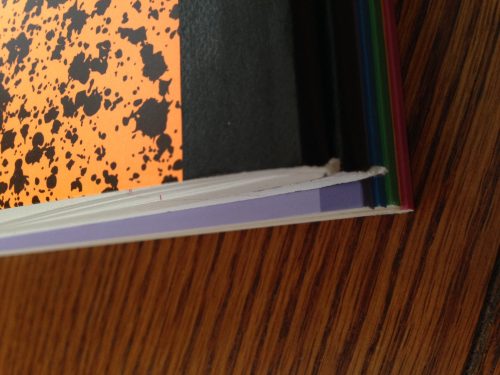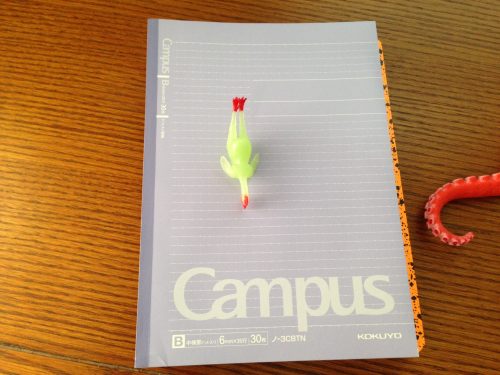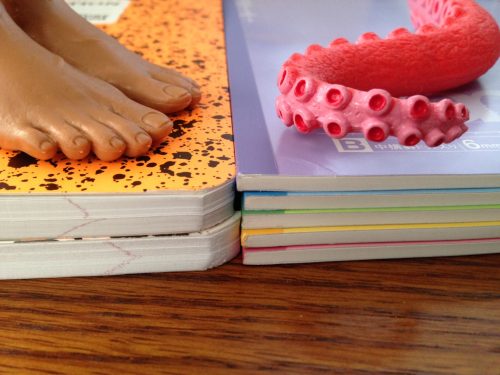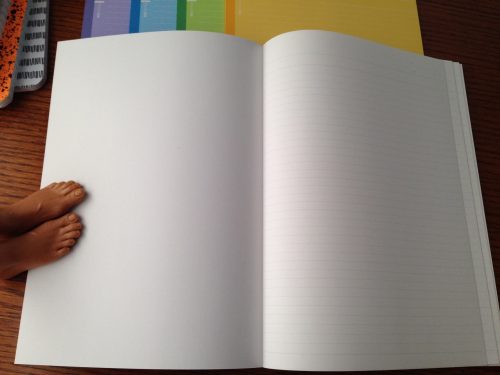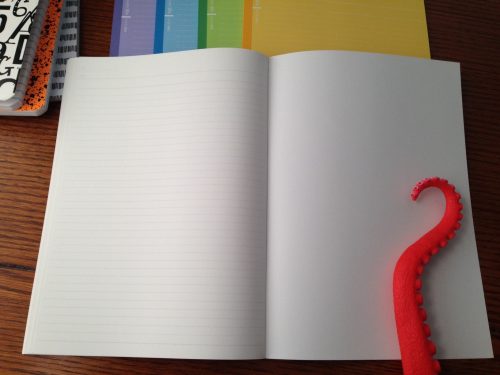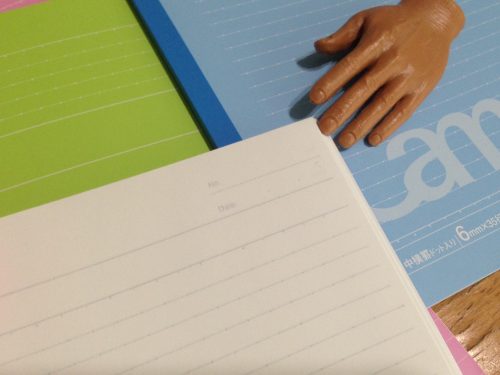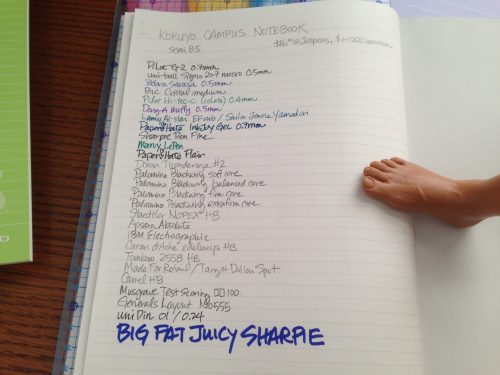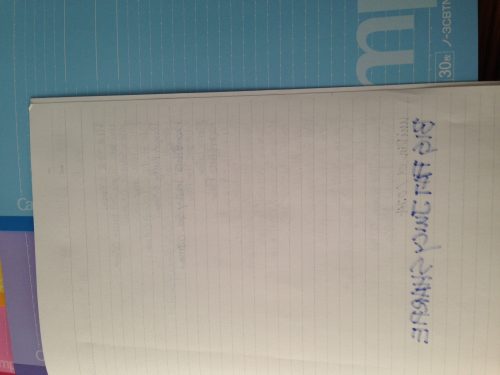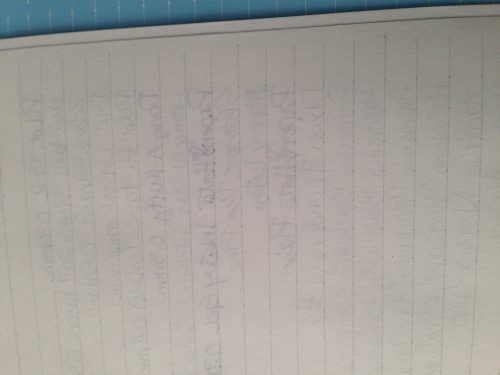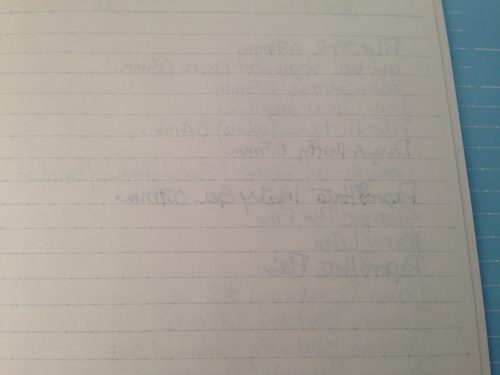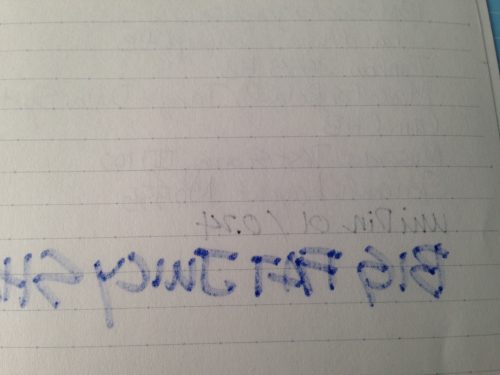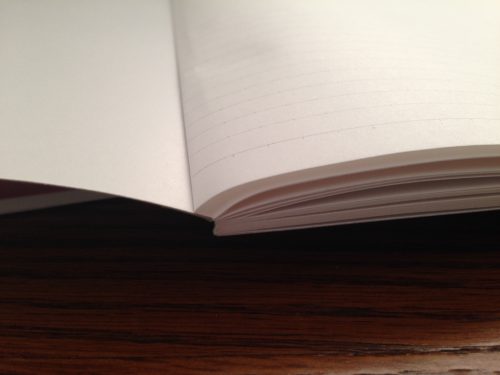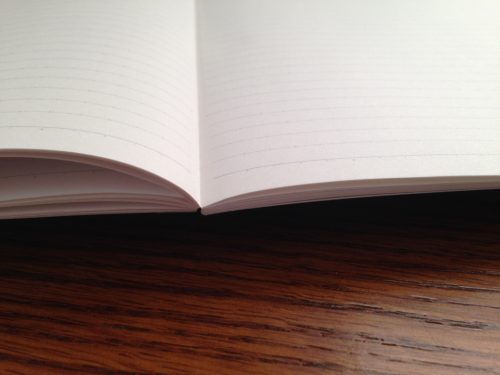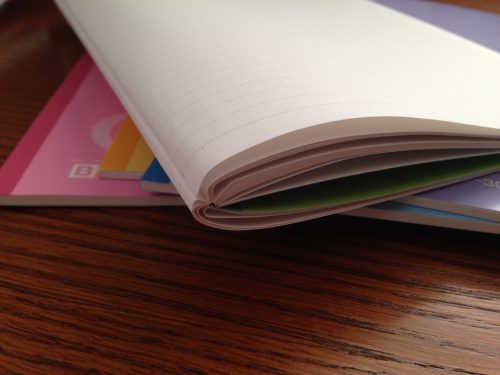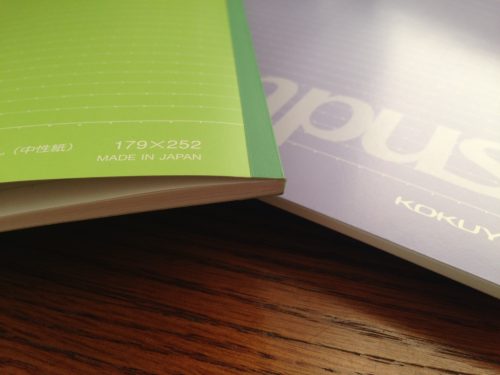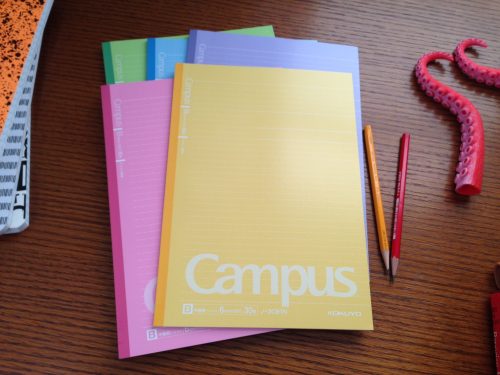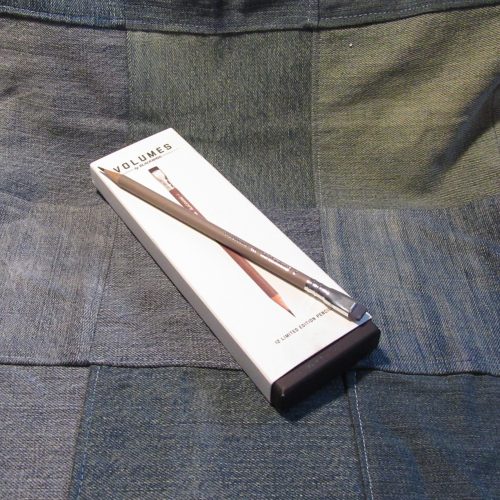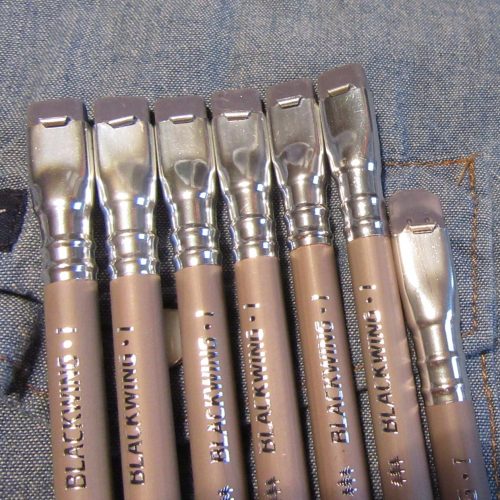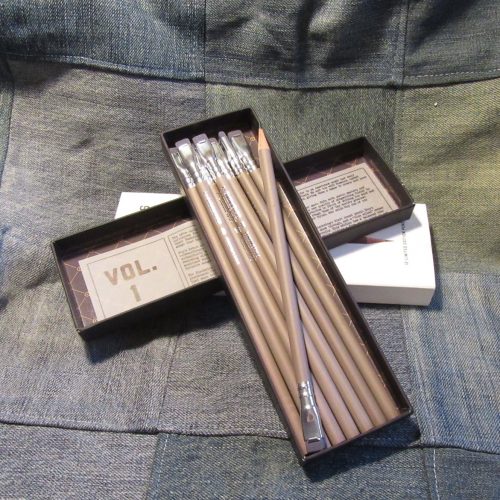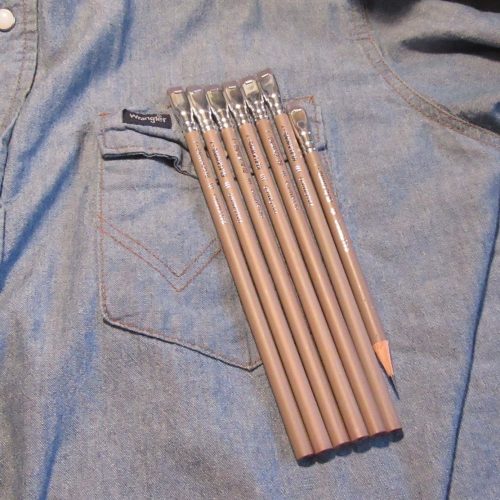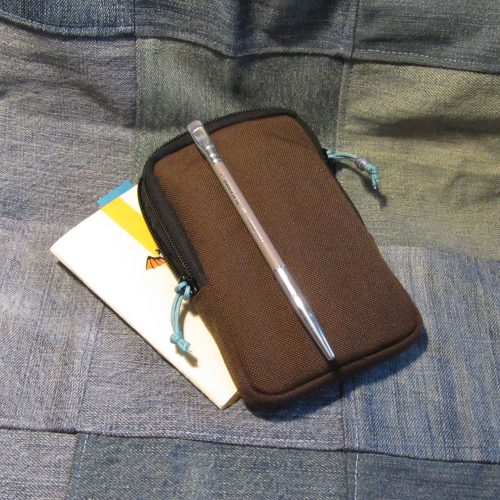This post is written by Lenore, one third of the 3 woman team that makes up the awesome RSVP Stationery Podcast. You can listen to Lenore talk stationery to you over here. You could also enroll at the University where she teaches chemistry if you really want to know more about the elements that make up the world around us. You can hang out in the RSVP stationery podcast Facebook group and learn even more about stationery!
My history with to-do lists and pocket notebooks has been a messy one. Like most of us, I often have lots of little personal tasks that need doing, some on a timeline, some not, along with tasks for my work including big jobs, small jobs, and big jobs that are made up of lots of small jobs. I’ve dabbled with various organization and productivity systems in the past, but have usually fallen back on some combination of a desk pad, a stack of index cards, a pocket notebook, or random scraps of paper, none of them organized in any intentional way.
So when I read Less’s post last week about her planner setup, [ed note this is from 2006 and unearthed when we were talking about OLD school GTD methods on RSVP.} there were three main components of it that leapt out at me and made the difference:
(1) The 4-page arrangement: two facing pages for lists, and the next two pages for random whatever. I needed this. One of my problems has always been the fact that there’s a combination of action items and random thoughts needing to be corralled, and like siblings in the back of a station wagon on a 13-hour road trip, these don’t play well together unless some thought is put into making space for them.
(2) The concept of marking things off *or moving them forward.* I don’t know why this had never occurred to me before as a formal part of a system; it always felt like cheating to mark something off one list and move it to another, but of course, it’s brilliant, because it keeps everything where you only have to look at one display, rather than checking back.
(3) Dropping in one vertical line for the margin, to check things off as they’re dealt with.
Of course, her setup, and the PigPog planner setup from which it’s adapted offer so much more than this. I was going to go the whole way, setting up my new notebook with sticky flags in the front, dedicated pages for various tasks, etc etc, but then it was four days after I had initially read her description and I still had no place to write down the first action item, which was, “Go back to Less’s blog post and set up planner.” So I realized that I needed to just take the very minimum components and get it going.
My setup is as basic as it gets: a dot grid No-Brand pocket notebook with a date in the front and my name and phone number in the back; 
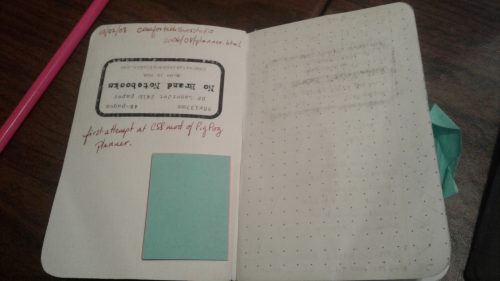
the first set of facing pages marked with margins and separated into four to-do lists;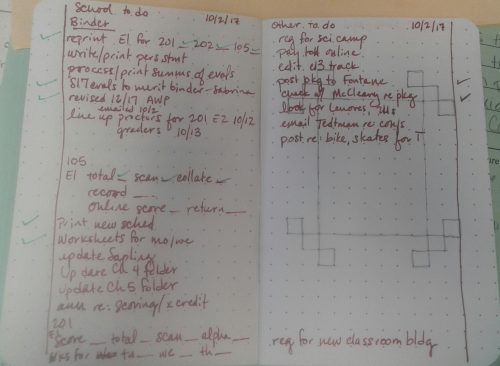
and the second set of facing pages marked as “idea pages”. 
Because of the weird way my first day went, the “idea pages” didn’t get any play, while the to-do list pages were nearly full. But that’s ok because I just leapfrogged over to the third set of pages for my next set of lists. It was fine.
Less’s setup has dates in the margins for when jobs need to be completed; I rarely need this feature, since I have a sense of the necessary timeline for most of my tasks, and can naturally prioritize them in an appropriate way when I have them all laid out in front of me. And since the number of tasks I’m recording is small enough for me to have an idea where most of them are in terms of progress, I don’t need the dot-slash-X-circle kinds of codes a lot of systems use. For me, a check mark indicating completion is usually plenty. Similarly, I don’t need color-coded inks (and indeed this would be an impediment to my using the system, since I don’t normally carry a variety of writing materials.) For me, it was really critical to give myself permission to write—and check off—with literally whatever is handy to write with. (This is another point in favor of the pocket notebook, since I often feel pressure to match the ink and use good handwriting in a “nice” journal.) 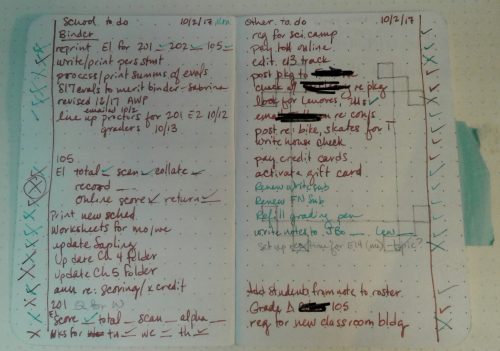 In my initial setup, I was thinking of three categories of jobs, but of course I didn’t allocate exactly the right amount of space for them so I ended up with some messiness when the longest list slopped into the next available space. Also, four lists is a more appropriate breakdown for me, if I’m going to use a single notebook for work and personal lists together. On my second set of to-do lists, I fixed that by starting two lists on the same page, one from the top line down, the other from the bottom line up. I left a space between them when they approached in the middle, and I still had to slop one list over to another area, but at least it was only one.
In my initial setup, I was thinking of three categories of jobs, but of course I didn’t allocate exactly the right amount of space for them so I ended up with some messiness when the longest list slopped into the next available space. Also, four lists is a more appropriate breakdown for me, if I’m going to use a single notebook for work and personal lists together. On my second set of to-do lists, I fixed that by starting two lists on the same page, one from the top line down, the other from the bottom line up. I left a space between them when they approached in the middle, and I still had to slop one list over to another area, but at least it was only one. 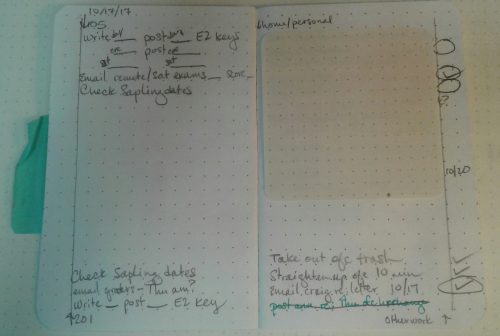 Oh, and here’s one of my revlations: when the pages started filling up with jobs, and then the margins started filling up with check marks, and I found myself staring down the barrel of opening a new page of to-do lists…I was reluctant to copy some of those jobs over. They were such little things, it really seemed like I should just do them instead of carrying them to the next list. I should just…do them…oh. I should just do them. Oh, yeah. I don’t know why it took me that long to catch on, I mean the point of a to-do list is to remind me to do things, but before starting this system, I was perfectly happy to let those jobs just sort of languish on an old list. I mean, I knew I needed to do them sometime, but…well, they were on my list, weren’t they? But now I have to put up or shut up. The day this dawned on me, I completed several small tasks that would normally have just fallen off the end of the day, again and again.
Oh, and here’s one of my revlations: when the pages started filling up with jobs, and then the margins started filling up with check marks, and I found myself staring down the barrel of opening a new page of to-do lists…I was reluctant to copy some of those jobs over. They were such little things, it really seemed like I should just do them instead of carrying them to the next list. I should just…do them…oh. I should just do them. Oh, yeah. I don’t know why it took me that long to catch on, I mean the point of a to-do list is to remind me to do things, but before starting this system, I was perfectly happy to let those jobs just sort of languish on an old list. I mean, I knew I needed to do them sometime, but…well, they were on my list, weren’t they? But now I have to put up or shut up. The day this dawned on me, I completed several small tasks that would normally have just fallen off the end of the day, again and again.
I use a few other adaptations that I haven’t noticed in other places (apologies if I’ve appropriated ideas without credit):
- For tasks that include several small sub-tasks, I often combine them on a single line, with spaces for check marks after each sub-task. Then when the whole series is done I can mark it off in the margin. For example, for an exam that has to be scored, the line might have:
“E1: Score___ Total___ Alphabetize___ Scan____ Collate____ Record____.”
Then if I need to move part of this to a new list, it might become
“E1: Collate___ Record___”
or just “Record E1.” 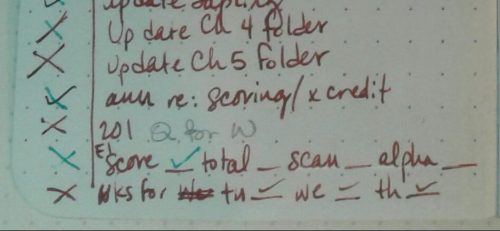 (b) I do use the PigPog method of keeping a sticky flag on the first page that still has active jobs listed on it. However I also literally mark across a page with a slash mark when everything on that page has been completed or moved. It helps me get over the uneasy feeling that I might be missing something.
(b) I do use the PigPog method of keeping a sticky flag on the first page that still has active jobs listed on it. However I also literally mark across a page with a slash mark when everything on that page has been completed or moved. It helps me get over the uneasy feeling that I might be missing something.
(c) For other needs that come up, I just start from the back of the book and use space as needed. Quotes, meeting notes, ink tests, drawings my daughter does when I’m trying to distract her at a restaurant, etc. Most of the things I might need to do in a pocket notebook are sporadic and unpredictable enough that I don’t need to invest mental capital in setting them up when I start a new book. The top consideration for me is low startup costs. The best planner is the one you’ll use, and my experience is that if I have to do a lot of organizational work before I can start my organizational work, I’ll close that loop by never doing any of it (and I’ll be back to a pile of index cards, a random scattering of pocket notebooks filling simultaneously, and a lot of dropped balls and missed deadlines.) 
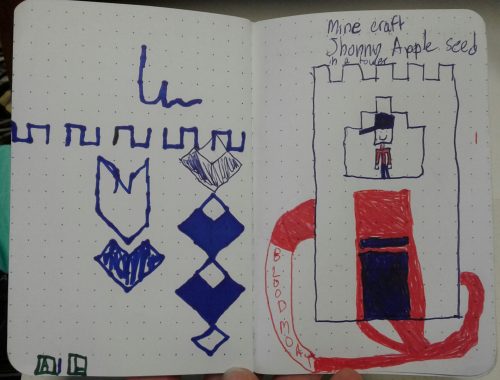 (d) When I have a task that really has to happen pretty quick, particularly if it’s a kind of task that is outside my normal workflow (I’m lookin’ at you, insurance open enrollment period), I put a circle in the margin (with or without a date) to draw my eye every time I open the book. [Pic 8]
(d) When I have a task that really has to happen pretty quick, particularly if it’s a kind of task that is outside my normal workflow (I’m lookin’ at you, insurance open enrollment period), I put a circle in the margin (with or without a date) to draw my eye every time I open the book. [Pic 8]
So, the tl;dr: new notebook; margin lines slashed in on outside edges of first two pages and date at the top (total setup time <30 sec); four categories of tasks, one category at the top and one at the bottom of each page; markthrough of entry and check mark in margin on completion of a task. A set of dedicated pages immediately after list pages for whatever brain dump/ephemera/info that needs to be captured and transferred elsewhere. A plan to use pages starting from the back for anything I need to use them for. Permission to be messy.
 Let me start with the basics. The Pollux is a hand held sharpener that creates an concave point in much like the vintage Janus sharpener or a modern crank sharpener. Good luck finding a Janus with a working blade. The Pollux is machined from a solid block of brass and the design is reminiscent of M+R’s Grenade or Brass Bullet sharpener, but longer. The Pollux was teased for months and months before it finally became available, when it was finally available it wasn’t offered with replacement blades. Replacement blades weren’t available until at least a month. Many of the initial run of sharpeners had dull blades that caused issues with sharpening.
Let me start with the basics. The Pollux is a hand held sharpener that creates an concave point in much like the vintage Janus sharpener or a modern crank sharpener. Good luck finding a Janus with a working blade. The Pollux is machined from a solid block of brass and the design is reminiscent of M+R’s Grenade or Brass Bullet sharpener, but longer. The Pollux was teased for months and months before it finally became available, when it was finally available it wasn’t offered with replacement blades. Replacement blades weren’t available until at least a month. Many of the initial run of sharpeners had dull blades that caused issues with sharpening.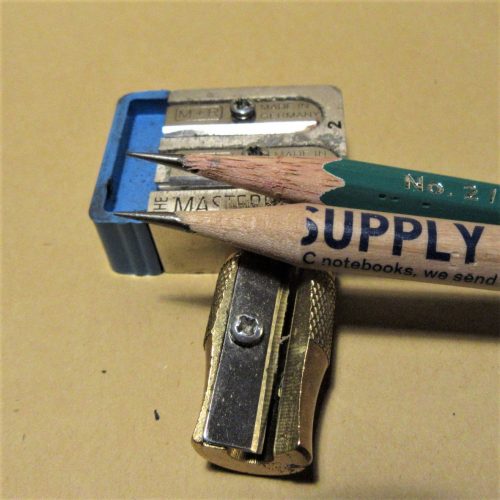 Once you got a sharpener with a working blade, the point the produced is long and concave. It is very similar to the Classroom Friendly point and slightly longer than that produced by the KUM Masterpiece. This is where the Pollux incites heated pencil nerdy debate. Unlike the Classroom Friendly and Masterpiece, which will sharpen any standard sized pencil to delightfully long points, the Pollux won’t. The Pollux is finicky and hates certain pencils. The Tombow 2558, my Nataraj Metallics, and harder graded pencils shatter and are devoured by the Pollux. The same pencil in the Classroom Friendly will sharpen perfectly. You could sharpen the same pencil to a nub in the Pollux and never get a point. The Pollux can be frustrating.
Once you got a sharpener with a working blade, the point the produced is long and concave. It is very similar to the Classroom Friendly point and slightly longer than that produced by the KUM Masterpiece. This is where the Pollux incites heated pencil nerdy debate. Unlike the Classroom Friendly and Masterpiece, which will sharpen any standard sized pencil to delightfully long points, the Pollux won’t. The Pollux is finicky and hates certain pencils. The Tombow 2558, my Nataraj Metallics, and harder graded pencils shatter and are devoured by the Pollux. The same pencil in the Classroom Friendly will sharpen perfectly. You could sharpen the same pencil to a nub in the Pollux and never get a point. The Pollux can be frustrating.
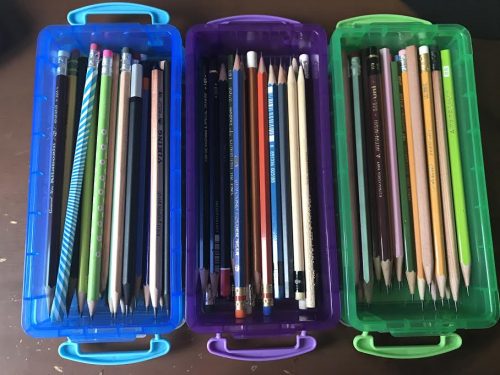 Practically speaking, I try to get the most out of what I do have by using it, using it and using it some more! There are a few things that I carry around with me on a regular basis that get a lot of use. First, is my little Klimt tin, which houses my most-used erasers and a traveling sharpener.
Practically speaking, I try to get the most out of what I do have by using it, using it and using it some more! There are a few things that I carry around with me on a regular basis that get a lot of use. First, is my little Klimt tin, which houses my most-used erasers and a traveling sharpener. 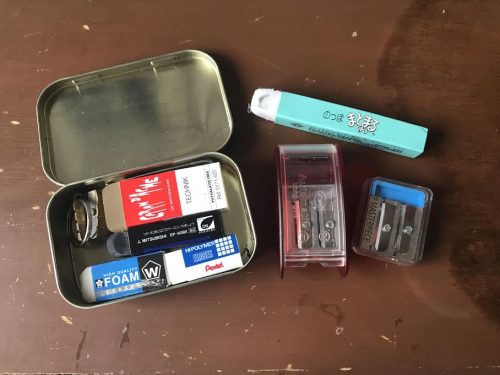
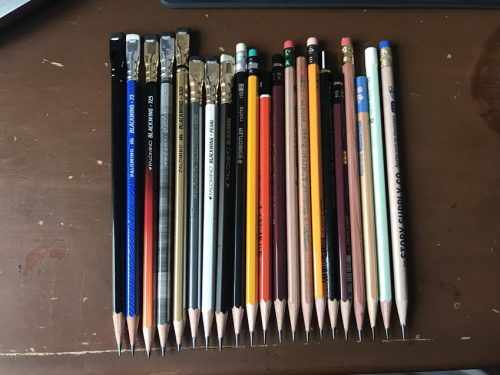
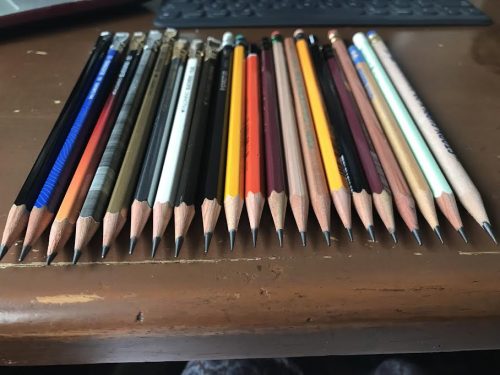
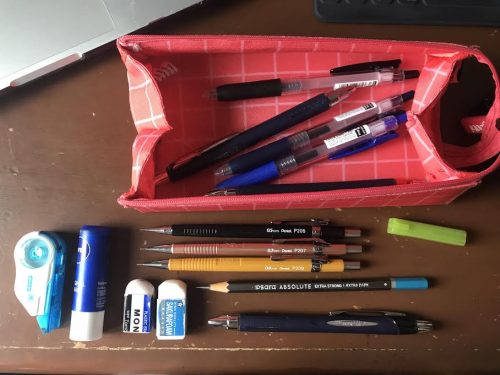 While as a medical student, we aren’t able to use pencil very often (we are required to use pen or submit typewritten work for the most part), my favorite use of pencil lies in my quiet daily life, in journaling, making grocery lists or my bullet journal. I have a special pencil case that I use when I travel along with my notebooks that can fit even an unsharpened Blackwing and has extra pockets where I can keep a Ziploc and a sharpener, for long point sharpening while traveling! My favorite notebooks are my A5 bullet journal (no brand traveler’s notebook), the Olive Edition by the Traveler’s Company used for journaling and my September Leather Field Notes size bought off Amazon for my notebooks that carry lists, brain dumps and speaker’s notes for the debate team that I train.
While as a medical student, we aren’t able to use pencil very often (we are required to use pen or submit typewritten work for the most part), my favorite use of pencil lies in my quiet daily life, in journaling, making grocery lists or my bullet journal. I have a special pencil case that I use when I travel along with my notebooks that can fit even an unsharpened Blackwing and has extra pockets where I can keep a Ziploc and a sharpener, for long point sharpening while traveling! My favorite notebooks are my A5 bullet journal (no brand traveler’s notebook), the Olive Edition by the Traveler’s Company used for journaling and my September Leather Field Notes size bought off Amazon for my notebooks that carry lists, brain dumps and speaker’s notes for the debate team that I train.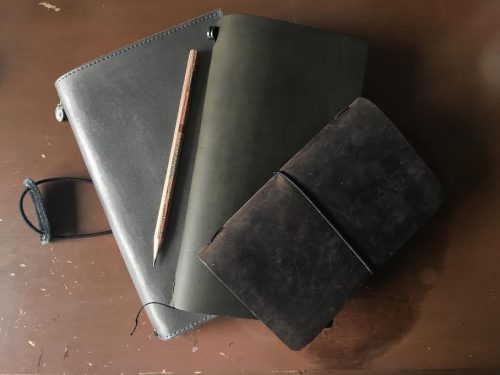
 All in all, when asked to describe my process and collection and myself, as a lover of stationery, I label myself as an appreciator—both a user and a collector. I find my collection to be large for someone who didn’t have to spend too much and I love, love, love trades because they not only allow me to get to know others within the pencil and stationery community, but they expose me to pencils and other paraphernalia that I would otherwise not have known without the kindness and knowledge of others. So maybe I can’t yet afford the renowned Pollux or snag a vintage Eberhard Faber Blackwing, but with my kind of SABLE, I find that I get to go on an adventure every single day.
All in all, when asked to describe my process and collection and myself, as a lover of stationery, I label myself as an appreciator—both a user and a collector. I find my collection to be large for someone who didn’t have to spend too much and I love, love, love trades because they not only allow me to get to know others within the pencil and stationery community, but they expose me to pencils and other paraphernalia that I would otherwise not have known without the kindness and knowledge of others. So maybe I can’t yet afford the renowned Pollux or snag a vintage Eberhard Faber Blackwing, but with my kind of SABLE, I find that I get to go on an adventure every single day.
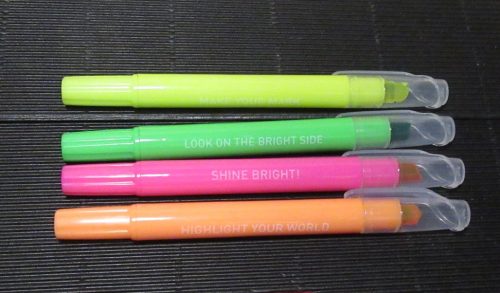

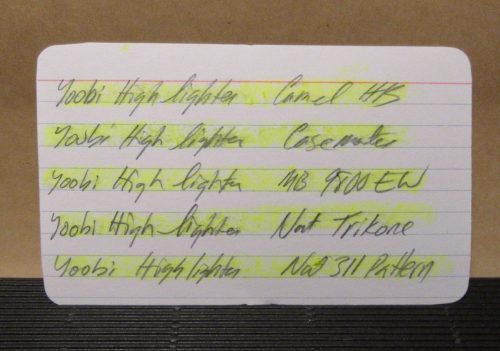
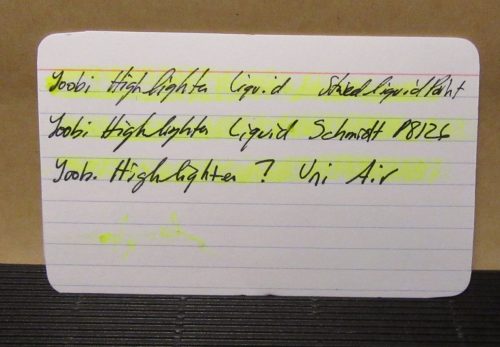

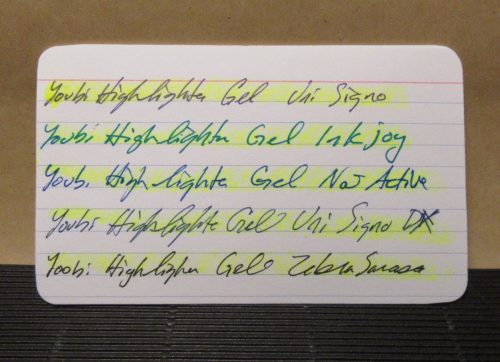



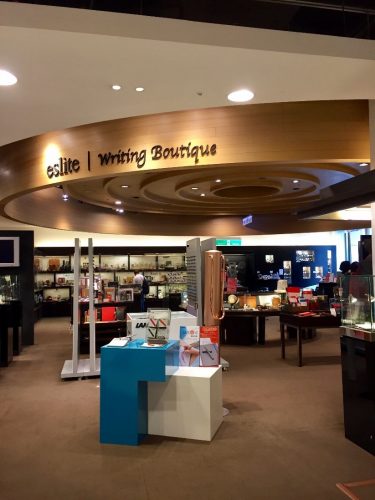 In my mad rush to find some pencils, I first stumbled across the “Writing Center” (pictured below) which mostly carried fountain pens and fountain pen related ephemera. They had these gorgeous Caran D’ache pencils—a set of four for $30 USD, which I had to pass on, but a quick trip upstairs landed me with some well-priced single Caran D’ache pencils, a cool store brand notebook, and an Agatha Christie novel I hadn’t read yet.
In my mad rush to find some pencils, I first stumbled across the “Writing Center” (pictured below) which mostly carried fountain pens and fountain pen related ephemera. They had these gorgeous Caran D’ache pencils—a set of four for $30 USD, which I had to pass on, but a quick trip upstairs landed me with some well-priced single Caran D’ache pencils, a cool store brand notebook, and an Agatha Christie novel I hadn’t read yet.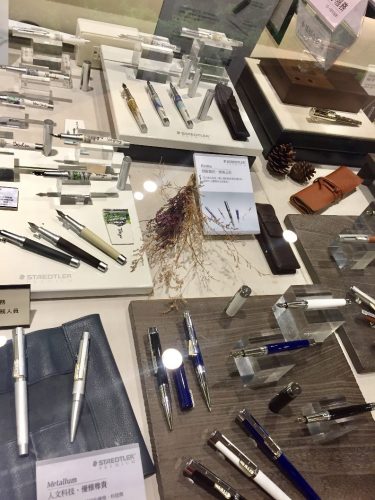 The store is a must for lovers of washi tape, as I felt like I couldn’t walk ten feet without bumping into another selection of (admittedly not cheap) beautifully designed tape. I also found this huge table of Rhodia products, half of which I hadn’t seen before. The store also carried Leuchturrm, Midori, and Moleskine products.
The store is a must for lovers of washi tape, as I felt like I couldn’t walk ten feet without bumping into another selection of (admittedly not cheap) beautifully designed tape. I also found this huge table of Rhodia products, half of which I hadn’t seen before. The store also carried Leuchturrm, Midori, and Moleskine products.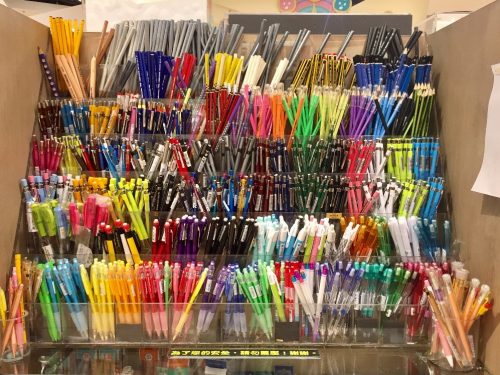
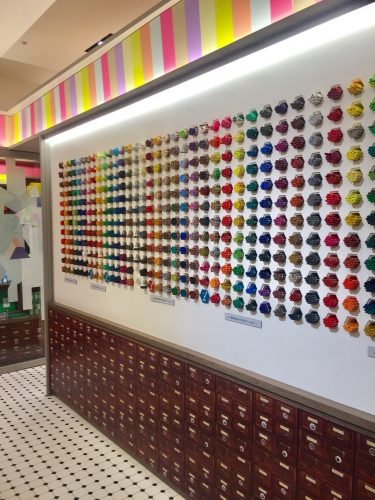
 The day I set out to hit the rest of my stops, it was pouring rain (yikes!) I’m pretty sure I ruined by shoes, but my love for stationery won out, and I found some real gems!
The day I set out to hit the rest of my stops, it was pouring rain (yikes!) I’m pretty sure I ruined by shoes, but my love for stationery won out, and I found some real gems!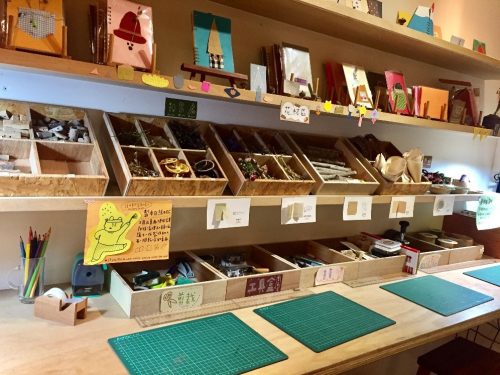 PINMO PURE
PINMO PURE I was about to leave when a jar of pencils caught my eye. In this magical jar I found some loose Palomino Blackwing 602s, a couple of Pearls, an older MMX with the gold stripe (which I snapped up), a vol. 1138 (!), and three vol. 24s (!!!) I rushed to pay for my purchase, constantly glancing around me making sure that no one was going to take my treasures away from me.
I was about to leave when a jar of pencils caught my eye. In this magical jar I found some loose Palomino Blackwing 602s, a couple of Pearls, an older MMX with the gold stripe (which I snapped up), a vol. 1138 (!), and three vol. 24s (!!!) I rushed to pay for my purchase, constantly glancing around me making sure that no one was going to take my treasures away from me. TOOLS TO LIVE BY
TOOLS TO LIVE BY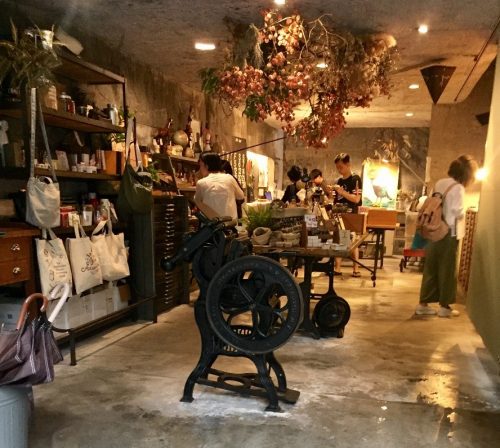
 They had a myriad of Japanese pencils as well as American pencils including loose Field Notes pencils (both the round ones and carpenter), Rhodia pencils, Palomino HBs, and a couple of loose Guy Clark editions too (which I happily picked up). They had some individually wrapped (!) Pitch Black Field Notes. They also had a really amazing selection of high quality (and priced) “Tools to Live By” branded items from delicate and surprisingly heavy scissors to beautifully thin metal rulers.
They had a myriad of Japanese pencils as well as American pencils including loose Field Notes pencils (both the round ones and carpenter), Rhodia pencils, Palomino HBs, and a couple of loose Guy Clark editions too (which I happily picked up). They had some individually wrapped (!) Pitch Black Field Notes. They also had a really amazing selection of high quality (and priced) “Tools to Live By” branded items from delicate and surprisingly heavy scissors to beautifully thin metal rulers.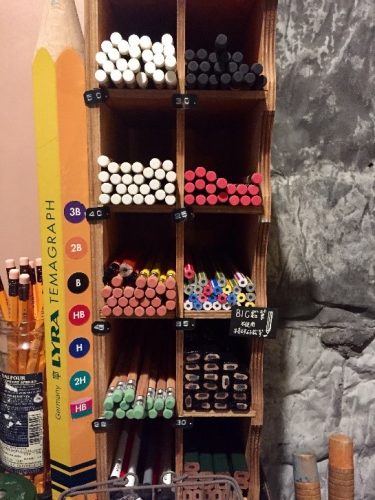 CONCLUSIONS!
CONCLUSIONS!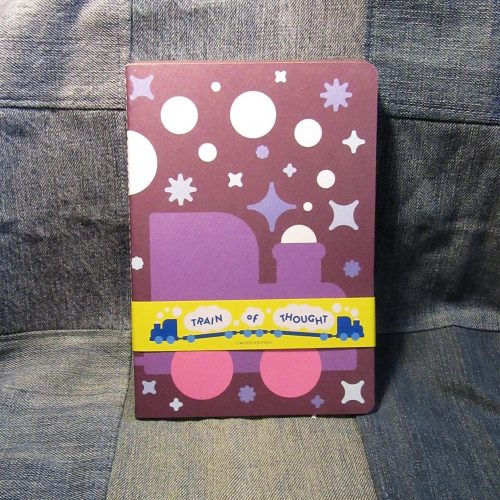
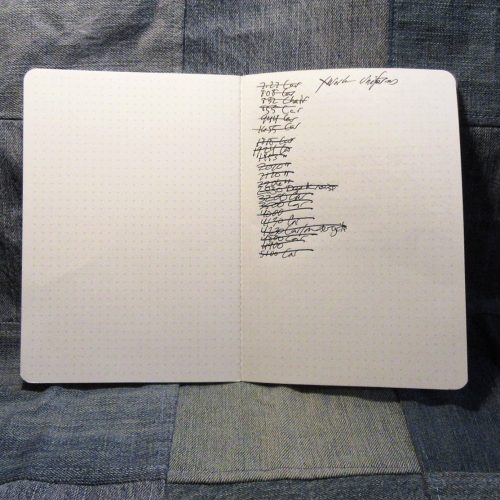
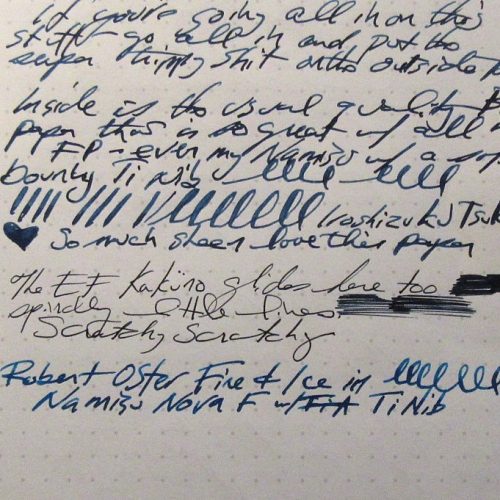
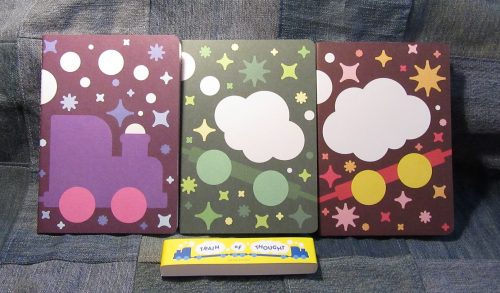
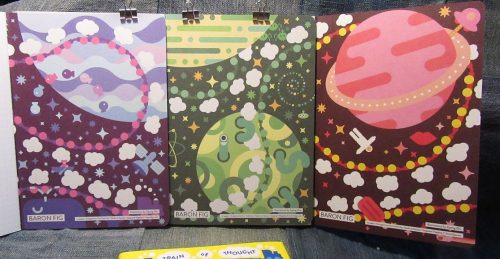
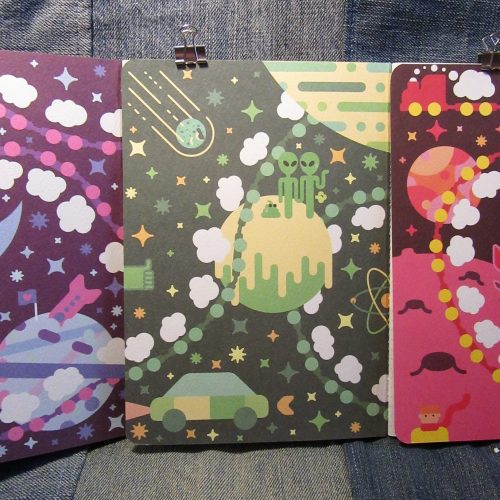
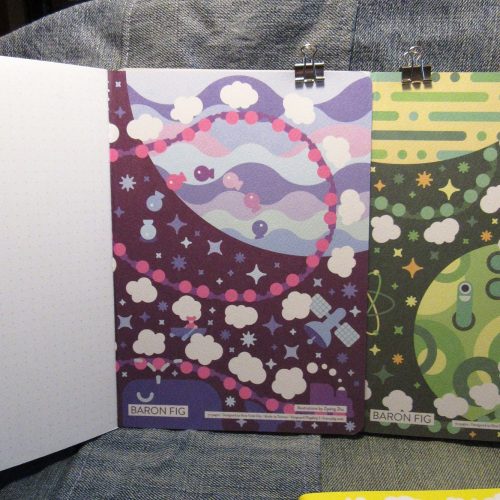 Here is where i”m going to go tangential on you. There is something really fresh and fun with all the things BF has been doing lately. Train of Thought is just one example where BF is shaking up the bring monotony of the stationery world. There are a hundred places where you can get a black grey, or white pocket notebook; hell even BF offers their notebooks in standard colors of black and grey. No I can’t take these into a stodgy board meeting but is that the target audience of these notebooks, or even the New School set? I don’t think so. I think Baron Fig is going after their core audience of younger professionals who might not be so concerned with what is considered “professional” in the traditional sense. I suspect a lot of people are going to loathe this set while many more are going to enjoy Lisa Frank on acid. I am in the camp who loves the idea of these despite working in an environment where my boss might tell me I can’t use them.
Here is where i”m going to go tangential on you. There is something really fresh and fun with all the things BF has been doing lately. Train of Thought is just one example where BF is shaking up the bring monotony of the stationery world. There are a hundred places where you can get a black grey, or white pocket notebook; hell even BF offers their notebooks in standard colors of black and grey. No I can’t take these into a stodgy board meeting but is that the target audience of these notebooks, or even the New School set? I don’t think so. I think Baron Fig is going after their core audience of younger professionals who might not be so concerned with what is considered “professional” in the traditional sense. I suspect a lot of people are going to loathe this set while many more are going to enjoy Lisa Frank on acid. I am in the camp who loves the idea of these despite working in an environment where my boss might tell me I can’t use them. 









